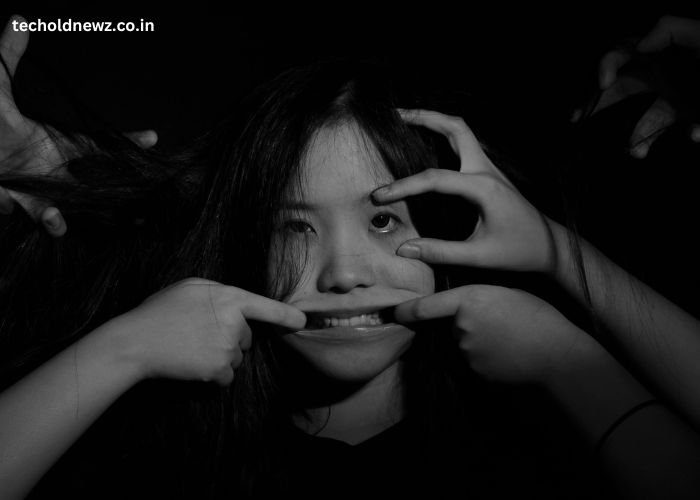A “Fake Smile DP” refers to a profile picture where a person intentionally shows a smile that is not genuine. It’s a smile that may seem forced or awkward, rather than coming from a place of natural joy. While some people may use it as a way to hide their true emotions, others might use it to create a certain image or mask their insecurities. Fake smiles are very common in today’s social media-driven world, where many people feel the pressure to appear happy, confident, and flawless.
In this post, we will explore why people use fake smiles in their display pictures, how it affects social interactions, and the importance of showing genuine emotions. We’ll dive deep into understanding the psychology behind fake smiles and how they impact our online personalities.
Key Points:
- Fake smiles may not reflect true feelings but are commonly used to hide emotions.
- A fake smile can create an impression of happiness that might not be real.
- Choosing a genuine smile over a fake one can build stronger and more authentic connections online.
Why Do People Use Fake Smile DPs?
The use of a fake smile DP can stem from various reasons. Social media has created a space where appearances are often prioritized, leading many to feel the need to project happiness even when they may not feel it. One common reason people use fake smiles is to fit in with societal expectations of positivity. In a world where everyone seems to be sharing the highlights of their life, showing a fake smile can be a way of blending in and not drawing attention to one’s true feelings.
Another reason could be the desire to maintain an image of confidence. Some people may feel insecure and choose to hide their vulnerability by displaying a smile, even if it isn’t genuine. By using a fake smile, they hope to appear more confident and friendly, masking the anxiety or sadness they may be experiencing inside.
Lastly, it’s important to remember that fake smiles can also be used for humor or as part of a playful persona. Some people intentionally put on a forced smile to create a particular image or to entertain others.
How Can Fake Smile DPs Affect Online Interactions?
Fake smile DPs have a noticeable effect on online interactions. Social media, being a virtual space, lacks the ability to capture non-verbal cues like body language and tone of voice, so a profile picture becomes an essential part of communicating one’s personality. A fake smile can, in some cases, send mixed signals. While a smile is generally associated with happiness, a forced smile can sometimes appear insincere and make it difficult for others to truly connect with the person behind the picture.
For instance, someone may view a fake smile and interpret it as an attempt to hide something. This can lead to feelings of discomfort or distrust, especially if the viewer feels the smile doesn’t align with the overall vibe of the profile. People are naturally attuned to detecting subtle differences in expressions, so even the slightest hint of a fake smile may lead others to question the authenticity of the profile.
Are Fake Smiles Always Negative in DPs?
Not all fake smiles are inherently negative. Sometimes, a fake smile can serve as a coping mechanism or a way of fitting into social norms. However, it’s essential to understand when and how a fake smile can backfire. For instance, if someone is using a fake smile to hide deeper emotions, it may prevent them from being their authentic self. In such cases, relying on a fake smile can contribute to emotional distancing or a lack of meaningful connection.
However, for some individuals, a fake smile DP can be seen as part of their personal branding or aesthetic. If someone is creating a curated online presence, where they want to appear polished or perfect, they may intentionally choose a fake smile to maintain this image. In these situations, the use of a fake smile isn’t necessarily harmful but instead reflects the user’s desire to project a specific image.
Note: While a fake smile may seem harmless, it’s important to consider how it impacts your emotional well-being and the connections you make online.
How Can Fake Smile DPs Affect Your Mood?
It’s interesting to note that using a fake smile DP can also have psychological effects on the person using it. Smiling, even if it’s forced, has been shown to activate the brain’s reward centers, releasing endorphins, which are hormones associated with feelings of happiness. This means that even a fake smile can momentarily boost your mood and trick your brain into thinking you’re happy.
However, this effect is often short-lived. Over time, if you consistently use a fake smile as a way to cover up negative emotions, it can lead to emotional fatigue or a sense of disconnection from your true self. The contrast between your online persona and real-life feelings can create inner tension. This disconnection might leave you feeling isolated or misunderstood, especially if you’re relying on the fake smile to mask emotions that need to be addressed.
Reminder: Regularly using a fake smile as your DP could reinforce emotional distance from others and potentially worsen feelings of isolation.
What Are the Alternatives to a Fake Smile DP?
If you’re tired of using a fake smile DP, there are several alternatives that might help you show more authenticity online. One option is to go for a neutral expression, which can be just as effective in conveying confidence and approachability. A neutral expression allows you to look calm and composed without the pressure of forcing a smile.
Another option is to choose a candid or spontaneous photo where you look genuinely happy. These kinds of photos capture the essence of real moments, making them more relatable to your audience. The beauty of candid shots is that they often capture natural expressions that don’t feel staged.
Finally, you could choose a more abstract or creative image that reflects your personality. For example, you could use a photo of an object, scene, or nature that you feel represents your mood. This could be an excellent way to express emotions without relying on a smile altogether.
Conclusion: Embrace Authenticity in Your DP
While a fake smile DP might seem like a quick way to appear friendly or confident, it can also create a barrier between you and your true self. It’s important to remember that social media is a place where authenticity can help you build deeper connections with others. A genuine smile, whether in a photo or a conversation, has the power to convey real emotions and invite others to engage with you on a more personal level.
If you find yourself using a fake smile to mask negative emotions or insecurities, it may be helpful to explore other ways of expressing yourself that feel more authentic. Embrace the power of a natural smile or a genuine expression that aligns with who you truly are. After all, authenticity is far more attractive than any forced gesture.
FAQ’s
- What does a fake smile DP mean?
A fake smile DP is a profile picture where the person smiles in a way that looks forced or insincere. - Can a fake smile DP negatively affect my social media image?
Yes, a fake smile can make you appear inauthentic, which might lead to difficulty connecting with others on a deeper level. - How can I make my smile in a DP look more natural?
To make your smile look natural, think of something that makes you genuinely happy, and allow your expression to flow naturally. - Is it okay to use a fake smile in a professional profile picture?
While it’s fine to smile in professional photos, make sure the smile looks genuine. A forced smile might seem untrustworthy in some professional settings. - Should I avoid using a fake smile DP altogether?
If you’re using it to cover emotions, consider embracing a more authentic representation of yourself. A genuine photo can help build better connections with others.


